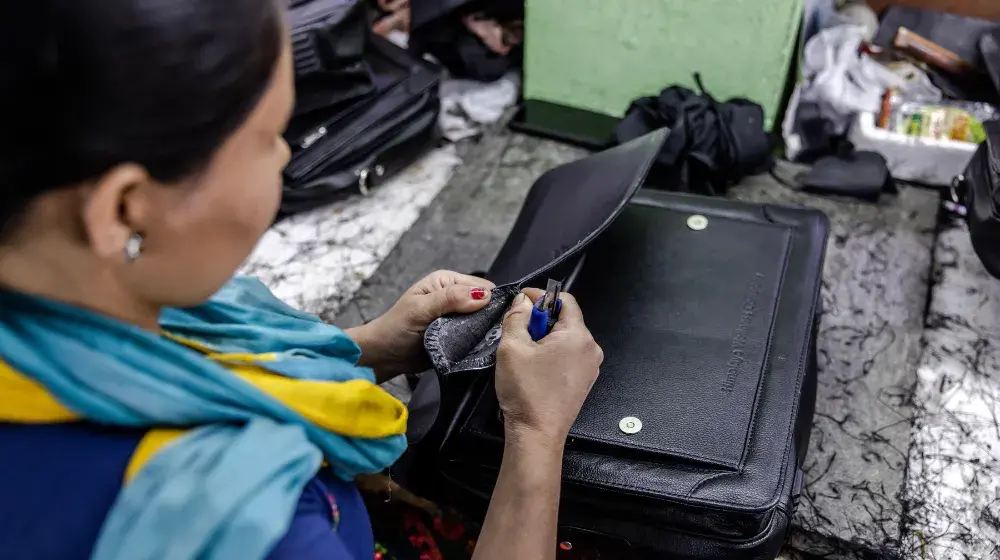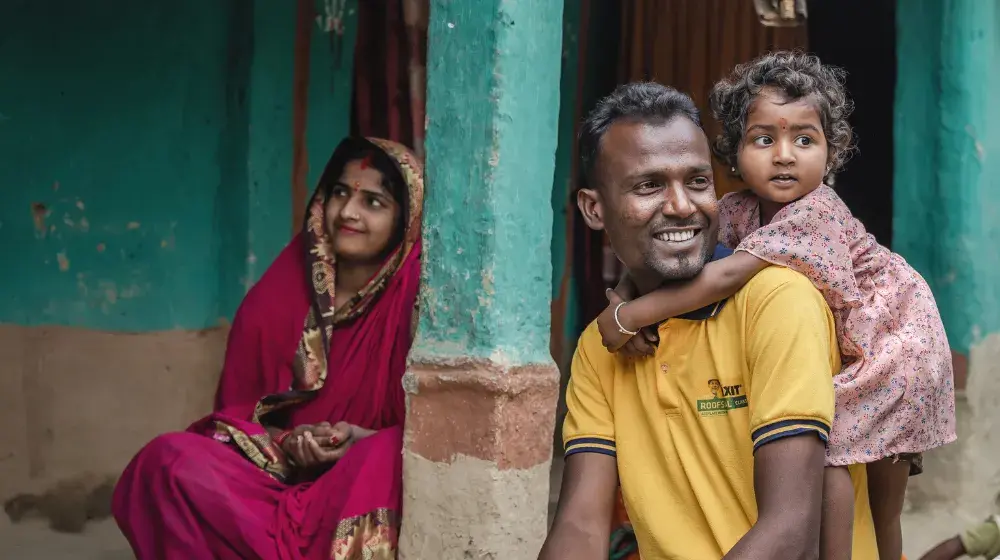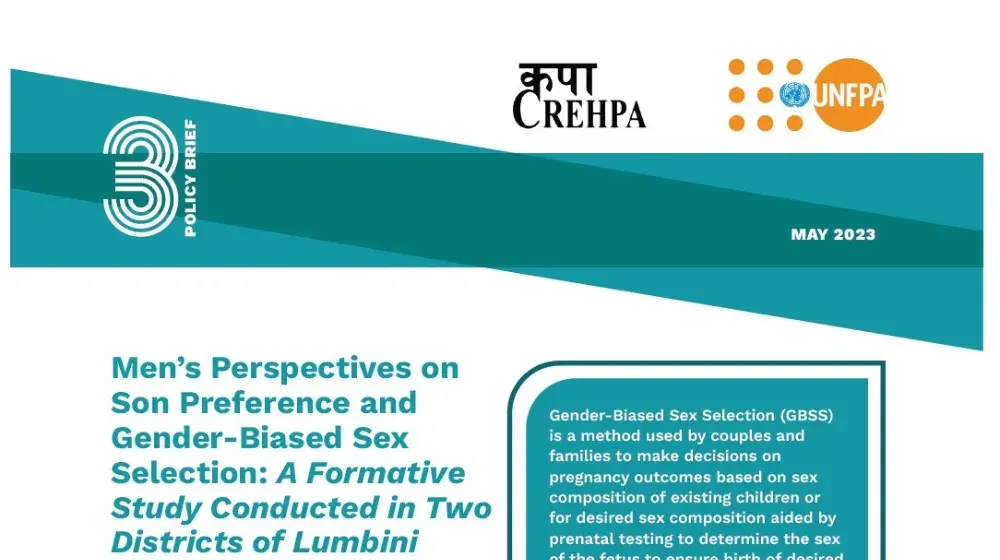|
An estimated two million women suffer from fistula especially in Africa, Asia and the Arab countries. The number, however, low in Nepal, massively impacts the morbidity associated with childbirth. As the first International Day to End Fistula is being marked on May 23, The Week follows up on its 2011 story. Bibek Bhandari reports. |
|
Silent sufferings |
|
|
TEXT AND PHOTOS: BIBEK BHANDARI Considering the 700,000-plus live birth rate in the country, it is calculated that the prevalence of obstetric fistula is 0.3 to 0.6 every 1,000 deliveries For many women in rural Nepal, motherhood comes at a cost. Maternal joys for them are merely momentary, and in most cases associated with stories of suffering. After the 32-year-old's delivery turned complicated, the health post at her village in Bhojpur couldn't do much. The nearest biggest hospital was miles away - she had to be carried on a stretcher by four men before being transported by road to BP Koirala Institute of Health Sciences (BPKIHS) in Dharan. But lack of proper antenatal checkup and quick access to healthcare facilities during labor meant her newborn had already died in the womb by the time she was in the hospital's delivery room. "They said everything was normal," Rai remembers what doctors had told her during her antenatal visits to her closest hospital as she sits on her hospital bed with discomfort. Rai says she has been leaking urine since doctors delivered her dead baby. Due to prolonged and obstructed labor, she has now developed a condition called obstetric fistula, a hole in the birth canal which leads to continuous leakage of urine. According to a report by the United Nations Population Fund (UNFPA) and Women's Rehabilitation Center (WOREC), an estimated 4,602 women are living with fistula with 200 to 400 new cases every year. Considering the 700,000-plus live birth rate in the country, it is calculated that the prevalence of obstetric fistula is 0.3 to 0.6 every 1,000 deliveries. On a global scale, about two million women in Africa, Asia and the Arab countries are living with this condition with about 50,000 to 100,000 new cases every year, according to End Fistula Campaign, which the United Nations initiated in 2003. In 2010, UNFPA-Nepal in partnership with WOREC initiated the very campaign in Nepal. Though the number of women suffering from fistula is relatively few in Nepal, even compared to its regional neighbors, the problems cannot be overlooked, says Dr Mohan Chandra Regmi, one of the countable surgeons who handle fistula-related cases. Regmi, also an Associate Professor at BPKIHS and founder of the advocacy group Fistula Free Nepal, underscores the social stigma and suffering of women due to the stench from urine leakage, which can further trigger other physical and psychological problems. "It's a devastating condition for women that gravitates maternal morbidity," he says. In silent suffering Like Rai, 48-year-old BK also had labor pains for three days before reaching a medical facility in Palpa. It was then she also underwent a uterine surgery at a local hospital, after which she says she started leaking urine. BK lived with that condition for three years before she had her surgery this month at Patan Hospital, one of the two recognized centers in Nepal for fistula surgery; the other one being BPKIHS in Dharan. In Nepal, prolonged and obstructed labor is the primary cause of fistula. A study on the very topic was also conducted at BPKIHS with the leadership of Dr Dhurba Kumar Uprety between 2005 and 2007 to assess the gravity of the problem in eastern Nepal. Their research notes that 95.6% of fistula cases in that part of the country has been the result of obstructed labor. But Regmi also points that of the total cases, 12 to 15% of the new fistula cases have emerged after uterine surgery. Lack of standard operating procedures in hospitals without proper infrastructure, along with the complications associated with the surgery, could be the reason, he opines. While access to healthcare fuels this problem, often leading to complications during delivery and even death, lack of education and women's involvement in decision-making regarding their health and wellbeing also comes into play as maternal morbidity is the question. Kabita Khadka from Dhading highlights the male hegemony prevalent in Nepali society. A mother of three now, the 30-year-old says that she requested her husband not to have any more children. "He just didn't listen," she says. Three of her children, including the last one she gave birth to three years ago, died due to complications. While other deliveries didn't "cause her much trouble, the last one, she says, made her daily life "a living hell." Unaware of the fact that her condition was curable, she lived with fistula for six months. Khadka says she didn't leave the house for the entire duration because she smelled of urine and didn't want neighbors to know. She couldn't even do household chores. "For that reason, both my in-laws and own parents didn't treat me well," she says, her voice choked. "I really felt discriminated against." Social stigma for women living with fistula is very high, says Goma Dahal, women's health counselor working with WOREC. During the past two years she was involved with the fistula awareness program, she says she has visited around 40 districts in Nepal counseling women with fistula, and also raising awareness on the very issue. "Most women and also the society think that they're suffering because of their sins," she elaborates on the lack of health consciousness among people. "Most women also don't give birth in the presence of health personnel which leads to conditions such as these." Dahal, who has been working on the ground for 11 years dealing with various women's issues, says she has encountered a majority of fistula cases in Morang, Udayapur, Dang, Panchthar and Darchula, among others. Most of the women, she says, are "living miserable lives." Referring to his interaction with his patients and his research, Regmi says that 30 to 35% of women with fistula are living isolated lives, some even after they have been cured. "Surgery is just one component to cure fistula," he says. "But it's necessary for women to have physiotherapy and psychosocial counseling, too. They also have to be reintegrated and rehabilitated." Every woman counts Dr Shirley Heywood has been working in Nepal for a decade and sees fistula as an issue that has largely been unrecognized and also unacknowledged. Currently based in Surkhet as a gynecologist with the non-profit International Nepal Fellowship (INF), she says in recent years the number of patients in the region has been in an increasing trend because people are talking about it and finding that fistula can be corrected through surgery. During the first year of surgery in Surkhet in 2009, there were only 10 women, Heywood says. In 2011, the number rose to 56 and 31 in 2012. This year, 39 women have already been corrected of their condition. The surgeries in Surkhet are being done in partnership with the Midwest Regional Hospital, she adds. At Nepal's only two fistula referral centers-Patan Hospital and BPKIHS-there is a regular but scarce influx of fistula patients. While BPKIHS has had about 100 patients during the past two years, Patan Hospital so far has operated more than 400 patients with fistula. The two centers have also been organizing surgery camps at regular intervals in the past few years. During their first year in 2010, while Patan Hospital had 11 patients, BPKIHS helped treat 25 patients. While a majority of their fistula programs has been a joint collaboration with non-profits like UNFPA and WOREC, in Surkhet, most of the financial assistance for camps and surgery comes from the Gaye and Keith Talbot Trust in the UK. Doctors say that surgery along with extended hospital stays can cost patients up to Rs. 50,000 each. These camps, according to Nepal's fistula expert Dr Kundu Yangzom at Patan Hospital, have helped highlight the issue and raise awareness among women. Until now, though Nepal Government has addressed fistula in its Nepal Health Sector Plan II that focuses on strengthening and expanding maternal and newborn healthcare services, it is yet not fully integrated into the Ministry of Health and Population's agenda. However, from the coming fiscal year, that will change, says Dr Shilu Aryal, Senior Consultant Obstetrician and Gynecologist at the Ministry of Health's Family Health Division. Aryal, who is also the focal person for reproductive health morbidity, says that during the uterine prolapse screening camps, women will also be screened for fistula and corrective measures will be taken accordingly. The government has proposed a budget of Rs 230 million with 10 to 20 screening camps in each of the 75 districts. While necessary measures are being taken, it is of utmost importance for the state to deliver healthcare to its people, says Dr Vinit Sharma, UNFPA Asia Pacific's Regional Adviser for Reproductive Health. "Fistula is caused by the failure of the system to respond to women's needs when she needs the most," says Sharma who also oversees the region's fistula campaign. "So it's a programmatic failure because all fistulas are preventable." As surveillance has gained momentum, in the past few years there has been an increasing number of fistula reported in South Asia with the bulk of women suffering from it in Afghanistan, Pakistan, Bangladesh and Nepal, Sharma says. The number of women suffering from fistula every year in Bangladesh and Pakistan is estimated from 700 to 1,000 while in Nepal, the number lies between 200 to 400 annually. Dr Grace Chen from the Department of Gynecology and Obstetrics at Johns Hopkins School of Medicine in the United States says that the prevalence of fistula can be in a large part related to the healthcare system of the country. Chen, who received funding from the Center for Global Health and Maren Foundation, was in Nepal as part of the Nepal Nutritional Intervention Project's research mission on the very subject. She states that lack of proper nutrition, coupled with early childbearing, and inadequate access to emergency and inadequate health services during pregnancy and obstetric care during emergency and delivery contribute to fistula development. "Fistula from obstetric causes was a major cause in developed countries, including the US as well, into the early 1900s," she says. The reason why it is no longer a significant issue is largely due to improved access to health." Though Nepal has been able to significantly improve its health services that have helped reduce maternal mortality over the past decades-the statistic is 281 per 100,000 live births-the challenge, as experts point out, is to look away from the numbers and delve into the overall components that embrace safer motherhood. "Women don't have to suffer from a condition that can easily be prevented," Regmi says. "Fistula is the result of unsafe delivery, and so the question here is not only limited to fistula but also safe motherhood." Road to recovery "But when I meet other women who come here for follow-up, I listen to their stories, which gives me hope," she says. Mira Gurung's story is one such. Three years ago, during her first pregnancy, the 27-year-old from Morang couldn't reach hospital in time for delivery. She lost her baby in the womb due to prolonged labor, which also resulted into fistula. However, Gurung says she was lucky to undergo a surgery quickly and within a month her condition was corrected. Now six-months pregnant, as she waited to see her doctor for antenatal checkup, Gurung says she would not risk delivering at home without any medical practitioners. During recent years, institutional deliveries have jumped up significantly. The Nepal Demographics and Health Survey 2011 shows that 35% of deliveries have been taken place in hospitals and handled by skilled care attendants, compared to 18% in 2006. The number of skilled birth attendants has also increased from 36 in 2006 (FY 2062/63 BS) to 1,081 in 2012 (2068/69), with a total workforce of 3,637. "The government has shown commitment to safer motherhood," Aryal from Family Health Division says. "Any safer motherhood activity would help reduce new cases of fistula." Regmi from BPKIHS stresses that it is important to take into account all reproductive morbidity that encompasses women's health issues together. For this reason, the Family Health Division formed a Reproductive Health Morbidity Group in 2011 to raise the issues of uterine prolapse, cervical cancer and also fistula. In order to give an integrated and organized approach, Regmi says Fistula Free Nepal is not only helping people to correct fistula and make them aware but also planning of producing technical expertise. Currently, the country has a countable number of skilled surgeons in this field - there are two doctors at BPKIHS and four at Patan Hospital. But as additional cases of fistula are coming forward, Yangzom says more healthcare professionals are also showing interest. "It's quite encouraging," says the senior gynecologist who was recently awarded by the Nepal Society of Obstetricians and Gynecologists for her work in the field of fistula. "And it's bringing fistula, otherwise hidden, out in the open." In the community, patients are personally making efforts to speak about their strained past. At the Aama Samuha (Mother's Group) meetings in her village, Gurung says she has talked about pregnancy-related complications and also about fistula. "I thought I was the only one suffering from it," she says. "But there are others in the community who don't want to come out and speak." BK and Rai also hope to do the same so other women don't have to go through what they did. But for now, as she sits on her hospital bed waiting for her test results, Rai says she is looking forward to seeing her five-year-old daughter whom she left with her parents. In three months, she will be coming back to Dharan again for her fistula surgery. "I just hope that'll be the end of it," she says with a smile, hoping for a healthier future. The writer is a freelance journalist.
|
|




